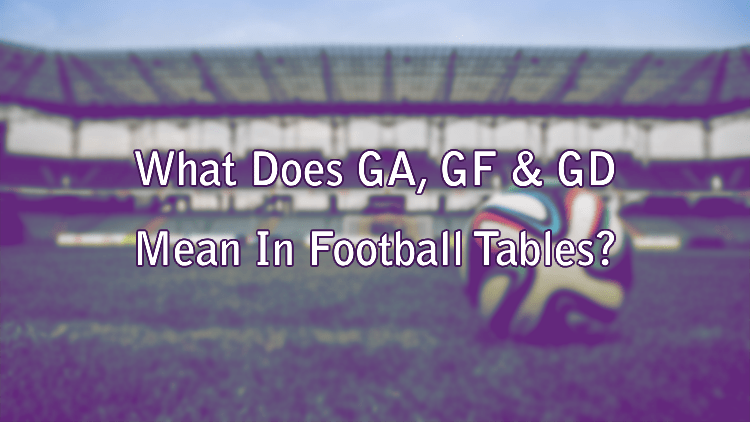
Football, the world's most popular sport, has its own unique set of terminologies. Among these are the abbreviations GA, GF, and GD, which appear regularly in football tables. If you're a football enthusiast, it's crucial to understand what these abbreviations mean to fully appreciate the sport.
What Does GA Mean In Football?
GA, in football parlance, stands for 'Goals Against'. This statistic tracks the number of goals a team has conceded during the course of a season.
The GA column in a football table provides a clear picture of a team's defensive performance. A low GA indicates that a team's defence is most likely robust and difficult to penetrate. Conversely, a high GA suggests that a team may be struggling defensively, allowing their opponents to score frequently.
What Does GF Mean In Football?
GF, on the other hand, stands for 'Goals For'. This refers to the total number of goals a team has scored throughout the season.
This particular column in a football table offers insight into a team's potential attacking prowess. A high GF score suggests a team with a potent attack, capable of scoring goals regularly. Conversely, a low GF score can imply a team's struggles in generating scoring opportunities.
What Does GD Stand For In Football?
GD is an abbreviation for 'Goal Difference'. This is calculated by subtracting the total goals conceded (GA) from the total goals scored (GF).
In simpler terms, GD = GF - GA.
The GD column in a football table is a crucial one, as it often acts as a tiebreaker if teams are level on points. A positive GD can indicate a team has scored more goals than they have conceded, while a negative GD suggests the opposite.
What Is Goal Difference In Football?
Goal Difference (GD) plays a significant role in football, especially when it comes to determining the rankings of teams in a league table. It's a numerical representation of a team's scoring efficiency and defensive solidity.
Teams strive to try and maximise their GD by scoring as many goals as possible while conceding as few as possible. Not only does a high GD reflect a team's superior performance, but it can also be a decisive factor in securing a higher league position, especially when points are equal.
Biggest Goal Difference In Football History
Football history has witnessed several instances where teams have recorded enormous goal differences. The most significant goal difference in professional football history occurred in a match between AS Adema and SOE Antananarivo, two clubs from Madagascar.
In a bizarre turn of events, SOE Antananarivo protested against perceived unfair refereeing by deliberately scoring 149 own goals, resulting in a final scoreline of 149-0 in favour of AS Adema. This resulted in the highest ever goal difference in a single football match.
Goal difference continues to be an essential metric in football, influencing the dynamics of league rankings, team strategies, and even player performances. As a football enthusiast, understanding these abbreviations and their implications can greatly enhance your appreciation of the beautiful game.
*All values (Bet Levels, Maximum Wins etc.) mentioned in relation to these games are subject to change at any time. Game features mentioned may not be available in some jurisdictions.
